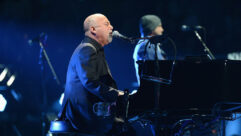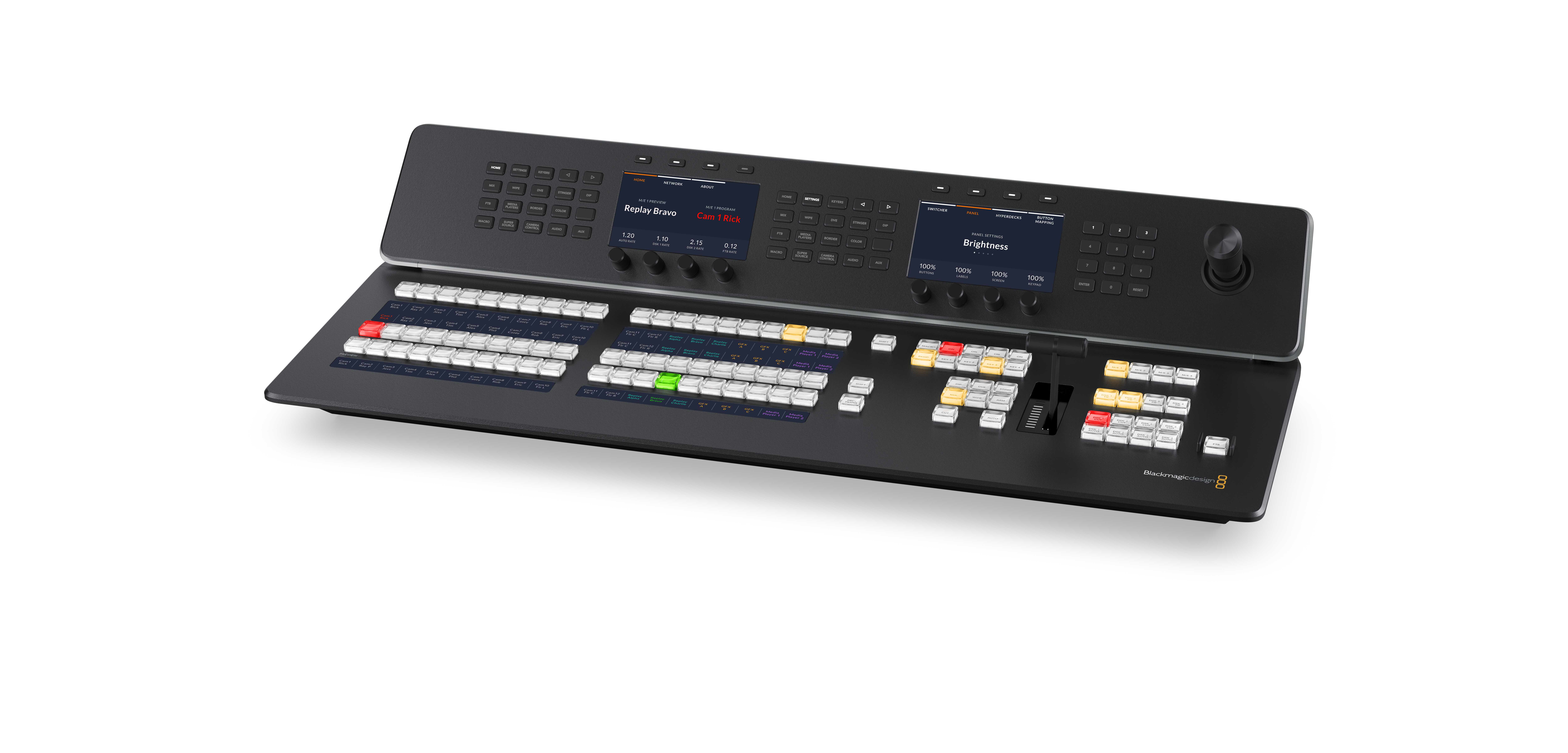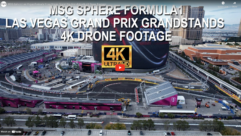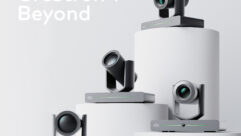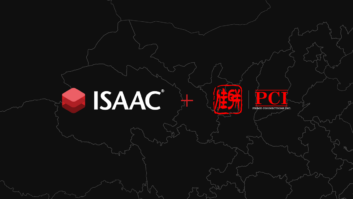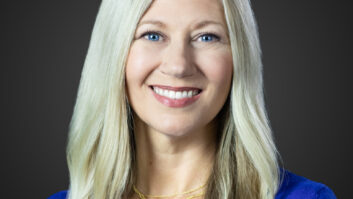TRANSCRIPT:
This is the SVC Podcast from Sound & Video Contractor Magazine with Seth Waltz of AVL Designs.
Physical acoustic treatment, hanging curtains, installing reflective clouds and carpet used to be the only way to change the acoustics of a performing space. The Baldwinsville High School auditorium needed an adjustable acoustic environment. Seth Waltz and AVL Designs came in with Yamaha’s Active Field Control and he’s here to tell us about how Yamaha AFC works. That’s up next on the SVC Podcast.
Hi Seth. We haven’t talked since you were here before, telling us about AVL Designs’ Glenns Falls Civic Center project a while back.
It’s good to talk to you.
AVL Designs is in Pennfield, New York and we’ve got a high school auditorium renovation which doesn’t sound like that big a deal until you look at the electronic approach to acoustics that you applied here. So many types of events happen in there that a physical acoustic treatment approach would have been a bare compromise at best but Yamaha’s Active Field Control sounds to me like it provides a dial-up acoustical environment.
Exactly.
Is this sort of project typical for AVL Designs?
We’ve actually been using AFC for probably about eight years. We’ve got 22 systems currently that we’ve designed that are installed and operating. We’ve got a bunch of other ones in design. And it’s been continually improving; the software and algorithms they’re using just keep getting better. But it lets us give a space really variable acoustics over the whole frequency range, which you can’t get with curtains and other methods that people have used over the years to try to vary the acoustics. And this school does 53, typically, concerts and events a year. All of them are performances. They’re either music productions, plays – all sorts of high-end stuff – and it’s a very aggressive music program. They really wanted to have the right acoustics for every style of music. [Timestamp: 2:09]
Of course, I looked at your Web site and there seems to be a lot of this but what other types of projects does AVL Designs do?
Well, our company, we do acoustics. Obviously we do electronic acoustics, audio, video, lighting, stage rigging. And a lot of it is theater, but we also work in sports venues, broadcast studios, convention centers. Just about any kind of performance venue that requires specialty equipment. [Timestamp: 2:35]
It looks like Baldwinsville High School had a number of challenges not just in sound but in lighting and sightlines. What did they want to accomplish with the renovation of this auditorium?
They wanted a true performing arts center, but we were stuck with a footprint and roof height in an existing part of the building that could not increase. So we had to look at some kind of innovative ways to get lighting, catwalks and everything else we needed in the room. And because of the sightlines we ended up with bleacher seating, which acoustically creates some real problems for music. You end up with not enough air in the room. So the maximum reverb time we get out of the space physically was limited. And they do orchestra and they do operatic things in there, so that was one of the biggest challenges was to try to do something about the room acoustics within the physical shell. And so we chose a black box design; no ceilings. The roof deck of the room is the ceiling. There’s some tuned absorbers and things hiding up in that black cavity that you can’t really see. Some of the wall panels are acoustical. Some of them are hard. So there’s a lot of things in the room that are used to tweak the room itself, but then the AFC was planned in from the basis of design to let us move that reverb time around and change the characteristics of the room at will. [Timestamp: 3:55]
Interesting to say the least when you have to take a place that you not may have had complete physical control over and make it sound right for any type of thing they want to do. I know that AVL Designs is very familiar with Yamaha’s Active Field Control so how did that system help this venue to get where they wanted it to be.
Well, we actually did get to design the entire interior of the room. We picked the seats, the acoustic character of the seats, the walls. So all of those things – we were stuck within the existing envelope, but everything was gutted so we started with nothing at the beginning. So the key thing was tuning it so that it had a particular response so that when the AFC takes over it can do the things it can do because there are limits to how far you can extend certain frequencies. There’s a whole bunch of things that have to be taken into account. Mechanical noise has to be extremely low, so we worked with a mechanical engineer to get that under control. A lot of preliminary things you have to do to get AFC to work, but then it’s able to do – literally, if you close your eyes you can sit in this room and as you run through presets you can hear the room get larger. You can hear bass extension that wasn’t there before. You can hear surround sound kind of effects where sidewalls are bringing more energy than they were with the system off, which simulates a much more expensive room with a lot of fancy stuff we really didn’t have in the space. So it’s kind of like way beyond a surround system because of everything it’s able to do. It has so many capabilities, including we’ve got it wired so they can use it for sound effects out of individual speakers within the room. So they can do all sorts of special occasion sound effects through the system as well. [Timestamp: 5:40]
In reading about Active Field Control I could describe it as a two-way sound system where you have not only sound originating onstage and going out the speakers as a final destination but then you have the sound going back from the house as real time acoustic data to be used in control.
The algorithm is basically a group of microphones that are placed over the stage and another group that are placed out in the house in front of the stage that pick up all the energy and a particular distance that is worked out in design based on the reverb time of the room. And then that’s run through software that simulates all these impulse responses that aren’t really in the room. So you can literally make the room larger and all sorts of things with it. But it’s not like a reverb unit like you use in the studio, but it has that sound quality. But because of the dozens and dozens of speakers placed all throughout the room that are individually processed you can literally move the walls away or the ceiling away with these electronic tools and kind of steer the way the room behaves for the particular type of performance you’re doing. [Timestamp: 6:44]
Yeah, I can imagine that’s a very special experience being able to just close your eyes and hear the whole building apparently changing shape and changing size.
Yeah. The first time we heard this Yamaha had it in their piano studio in New York City, which has about a 12-foot drop ceiling. And they had a string quartet in there and a grand piano, and I literally – you had to close your eyes because you knew you weren’t hearing the room you were sitting in. And that was the early iteration of the system, and it was so good that it really made you feel like you were in about a 400-500 seat room – not in a room with a drop ceiling that seats about 50. And that was the really early version which had some edge to the sound. It’s like if you slapped your hand on something you’d hear some reverb tail that wasn’t natural, but that’s all gone now. This thing has come so far that it’s fooling professional classical musicians in a number of venues we’ve used it in. [Timestamp: 7:39]
There’s nothing like actually having the system out on the market and being installed in a lot of different situations. No two venues are going to be exactly alike. So how many different settings do you have on this one? How would you set it up differently for say, a presenter at a school assembly or for a musical group?
Well, we’ve got one setting that’s called Voice Lift, which does just additional early reflections. It raises the natural sound of a person on stage by almost as much as six decibels in the seating area. And this is without using the sound system that’s in the room. There’s also a sound system in the room. But this is the acoustic electronic system. In a lot of the venues we’ve done a person can give a lecture on stage, if they have a decent voice, without using a microphone. They can just stand up there and present and most people have no problem hearing them. Part of that is because the mechanical noise is well-controlled. Then when we go to a music mode, we will increase the reverb time of the room. We’ll change the base extension of the room and base ratio, depending on the style of music. We also have on stage in the stage rigging an electronic shell for the stage so that they don’t have to have those big, physical wood shelves that most stages have to bounce sound back to the musicians. That’s controlled. So there’s a half a dozen presets for the seating area and a half a dozen presets for the stage, which have been combined down and controlled through a Crestron system where you select the style of music and you select is the stage active or not, so you have some options depending on what you’re doing. But it’s really – it’s literally going from sounding like a lecture hall to sounding like a concert hall over a variety of settings for different styles of music. [Timestamp: 9:20]
And of course, playing around with it and going through all the settings after it’s installed is the fun part. But that’s after all the heavy lifting and everything is done.
Exactly.
What was involved in connecting all of the wiring and components for this system?
Well, one of the things that’s unusual, I think we’ve got something in the neighborhood of 84 loudspeakers in the room. I don’t remember off the top of my head, but it’s a large number. I know there’s like 16 on stage plus subwoofers and there’s a ton of them out in the seating area. Every single one is a home run. There’s no parallels. Every unit is driven by its own processing, its own amplifier, so it’s just a mile of wire. And they all have to be at particular heights relative to the seats going up to the seating area because it’s shallower. We had to use more loudspeakers in the back to get the coverage so you don’t have any hotspots. You don’t feel like there’s something over your head. So it’s just a lot of physical installation and the contractors who did it, It’s a lot of rigging, a lot of writing, and kind of a configuration they’re not used to because it’s like a distributed sound system. It does loudspeakers off of one amplifier channel. On this one is a dozen amplifier channels. [Timestamp: 10:27]
Well, this complex a system is not something where you call up the local PA guys and say, “put in one of these.” The experience AVL Designs has with Yamaha’s AFC has been extremely valuable. This place would have some kind of stage monitoring. Are the acoustics onstage separately adjustable from those in the house?
Yep. The stage system, you can have it on early reflection so that the actors on stage hear themselves better in a play, for example. Even though they may be wearing head mics that are going through the PA, this lets them hear themselves without floor wedges or side fill monitors on stage. They’re all there too, but that’s a whole other system. You can completely adjust the two separately so depending on how the operator wants to run an event they can do some pretty special things without having to do traditional sound reinforcement techniques for everything. [Timestamp: 11:15]
You got all this in and working right but was there any kind of a tight timeline on having it all in and ready to be tested?
This was a big project because the room was gutted. It was actually under construction for, I think, a total of 18 months. Most of this work got done in the last two months because all the conduit and the rigging hardware was installed as the building was going together, but they couldn’t actually get the electronics in until the room was clean. So the contractors that did this work were doing most of their work the last two months before the building opened. This system was tuned and ready to go four weeks before opening. Some of the other systems literally got online two days before opening. So this one we had a little leeway, which was good. [Timestamp: 11:59]
I would imagine, with the experience you have on these things. How many of the AFC systems did you say you’ve installed so far?
We’ve got 22 that are installed and we’ve got probably another dozen that are out – either have been bid or are in design right now. So we’ve had quite a history with them. Our oldest one is eight years old and we do keep track of them. We’ve never had a failure, but we’ve had one that had to have software reloaded because there was a power outage in the building that damaged the power supply. But these things have been incredibly robust. But the other thing is – I can’t name names. We’ve had professional artists in a lot of these rooms that we have heard back from their sound engineers that they loved the acoustics of the room and they had no idea the system was in there. And these were kind of plain Jane looking rooms that these things were in and people just go, “Wow, I love the acoustics in this room. I don’t know what it is, but it just sounds so good.” [Timestamp: 12:52]
Sounds like all you really need is a button on the controller that just says, “Love this room” and you just push that to work for any situation.
Yeah. Well, and the thing that’s interesting is if you’re in one of these rooms and you turn it off at any point, the room doesn’t sound bad because we’ve tuned the room to be neutral and not have any weird aberrations like echoes or anything strange. But when it shuts down it’s disappointing. It’s like you just lose this musicality that is there. And we could design a room physically – and we’ve done it. We’ve designed recital halls that have that physical acoustic condition that sounds like that. But when a room is that live and it has that much bass, don’t ever put a rock-and-roll band on stage, don’t put a brass ensemble on stage, because the room is going to be too much. The beauty with this is you can have this orchestra play with all the subtly and all this nuance and then when you’re doing the talent show with a rock-and-roll band you turn it to one of the really low presets where it’s barely doing anything and it’s just so much better to be in that room for that use. [Timestamp: 13:51]
It’s got to be fun running the system through everything it can do and especially demoing this thing for people who have never heard it before. So, next week we’ll get into some more specific things about it, where things are located and how they’re controlled. I’ve had a great time getting more into Active Field Control. It’s Seth Waltz from AVL Designs in Pennfield, New York and the Baldwinsville High School auditorium renovation, a much more involved project than it might sound like initially. Thanks for giving us a look at it Seth.
Thank you.
Yeah I can imagine that’s a very special experience being able to just close your eyes and hear the whole building changing shape and changing size.
Great talking with Seth Waltz. We’ve got all the show notes and product links on the Sound & Video Contractor Magazine web site at svconline.com. On next week’s show Seth will give us the details on exactly what went into putting the Yamaha AFC in place and adjusting it to perfection so be back with us for that on the next SVC Podcast.


